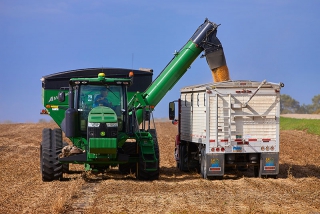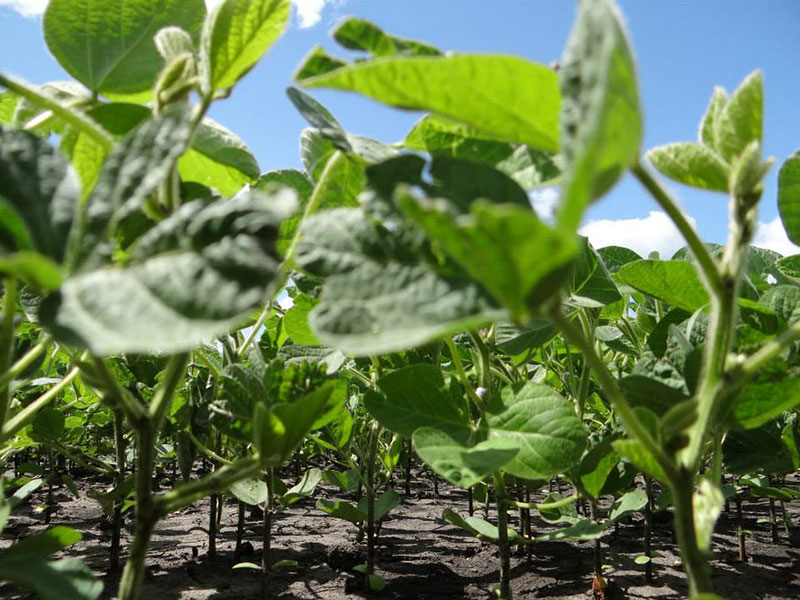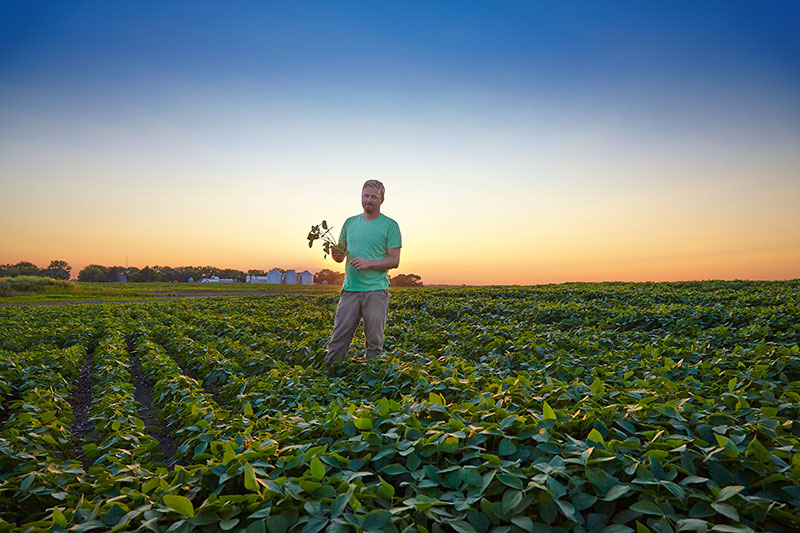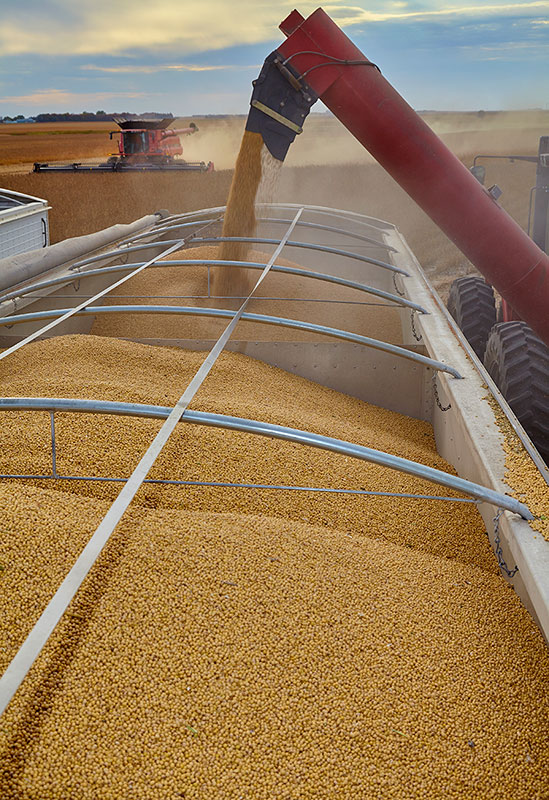
Soybeans: High Protein and Unpredictable Future
27 February 2019The versatile soybean sought after for its oil and high protein content has become an economically volatile crop over the past year.
By Thomas Smith
 With its dry climate and unpredictable soil conditions, Jamestown, ND, is on the outer edge of where soybeans like to grow. However, recent advancements in science and technology have made soybeans a popular crop to grow in the North Dakota region. Although soybean production is impacted by innumerable variables, recent years have seen U.S. soy crops thrive.
With its dry climate and unpredictable soil conditions, Jamestown, ND, is on the outer edge of where soybeans like to grow. However, recent advancements in science and technology have made soybeans a popular crop to grow in the North Dakota region. Although soybean production is impacted by innumerable variables, recent years have seen U.S. soy crops thrive.
“We’ve been having record corn and soybean crops for the last five years,” said North Dakota farmer Jeremy Rittenbach, “that’s not typical.”
Rittenbach is a fourth-generation farmer who inherited his farm from his grandfather when he was 21 years old. He currently works alongside his brother and his uncle, and he said there isn’t anyone he would rather be in business with.

Together, the family farms 4 thousand acres of soy, which produces over 9 million pounds of beans each year. The grower said much of the land he farms is rented, although his family has rented the same land for generations. He hopes one of his three children will one day continue this tradition. In addition to soybeans, he grows sunflowers, wheat, durum, barley, pinto beans, black beans, lentils, chickpeas, green and yellow field peas and corn.
“In general, soybeans became a viable crop to raise in North Dakota– and definitely in my county– just because of general (seed) breeding,” Rittenbach said.
Rittenbach’s grandfather tried growing soybeans in the 80’s, but the varieties of soy available at the time weren’t well-suited to their geographic region. The grower said he started growing soy again when he inherited the farm in 1998, but the first few years were not very productive.
Advancements in seed breeding within the last 15 years have made soybeans a major economic crop in North Dakota, the farmer said. Breeding soy seeds for desirable traits is not the same as genetically modifying the organism, which is altering a plant, animal or microorganism’s genetic material or DNA in a way that does not occur naturally. An example of a GMO soybean is one that has been modified to become resistant to weed-killers like Roundup.
“Food grade soybeans are (always) non-GMO,” he said. “I do grow some GMO, but it is as a management tool to help me control weeds and keep the ground in good condition, and then when I’ve got a piece of ground that fits I will grow non-GMO soybeans.”
Soybeans are prized for their oils. But beyond this basic cooking stable, instructors may be surprised to find other utilizations of soy. For instance, Textured Soy Protein (also known as TSP or TVP) is 80 calories per serving, has zero fat, four grams of fiber and is shelf-stable. TSP can be used in burgers, tacos, Sloppy Joe sandwiches, chili, cookies and more. More familiar sources of soy include tofu, edamame and soy flour. Tempeh and miso are fermented forms of soybeans.
The high protein content of food-grade soy makes it excellent for use in vegetarian meat substitutes. Studies show soy may have anti-cancer and cardiovascular health benefits suggest an early introduction of dietary soy may increase these benefits. According to the American Nutrition Association, soy is an anti-coagulant, which reduces blood clotting.
Chefs may prefer soy to meat for its spongy texture, and even meat-eaters like Rittenbach’s family love soy-based meat substitutes. He said his family has a tradition of serving a vegetarian pot roast, yet his personal favorite soy product is a sausage substitute he grew up eating.
“When we have Thanksgiving or family events, someone’s always in charge of bringing the non-meat vegetarian substitute,” he said, “and that’s one of the things it seems like everyone enjoys. Especially the kids, so if we know we’re going to have a lot of kids there, sometimes we’ll make two roasts.”
Most American-grown soy is sold to Asian markets, where it is often processed for use in products like soy milk, natto and soy sauce. The grower said buyers like different characteristics of soy, like seed size and taste, for use in different products. Right now, a company is developing a soy-based yogurt with a variety he grew last year.
 Historically China has been the biggest importer of U.S. soy. However, China recently increased tariffs as part of the US-China trade wars which has had a serious negative impact on the soy industry. According to statistics provided by the American Soybean Association, China imported over eight times more whole soybeans than any other country in 2017. Statistics in a Forbes article confirm Chinese soy purchases have fallen from 57 percent of all U.S. soy exports in 2017 to just over one percent in November of 2018.
Historically China has been the biggest importer of U.S. soy. However, China recently increased tariffs as part of the US-China trade wars which has had a serious negative impact on the soy industry. According to statistics provided by the American Soybean Association, China imported over eight times more whole soybeans than any other country in 2017. Statistics in a Forbes article confirm Chinese soy purchases have fallen from 57 percent of all U.S. soy exports in 2017 to just over one percent in November of 2018.
“North Dakota probably took the biggest brunt of the hurt because we’re landlocked,” Rittenbach said. “We don’t have a giant animal agriculture industry in North Dakota and we don’t have large hog feeding facilities or a poultry industry. So, a lot of our corn and beans have to leave the state and then get supplied to export facilities.”
Because Rittenbach has a contract with Taiwanese buyers, he hasn’t been hurt as badly by tariffs as other North Dakota farmers. He said he sells his soybeans to a local company where they are cleaned and processed. Next, they are sent to Chicago by freight, then the pacific northwest by train, where they are shipped to end users in Taiwan.
Soybean profits are determined by global economics as well as environmental factors like soil quality, rainfall, frosts, sunlight and pests. The farmer said he has no idea what the future will hold for soybean markets.
“You just can’t beat good weather,” Rittenbach said with a laugh. “If it rains at the right time or the wrong time you just can’t beat it. It’s the one thing that probably is going to influence your outcome the most.”
Photo credits: ND Soybean Council.
